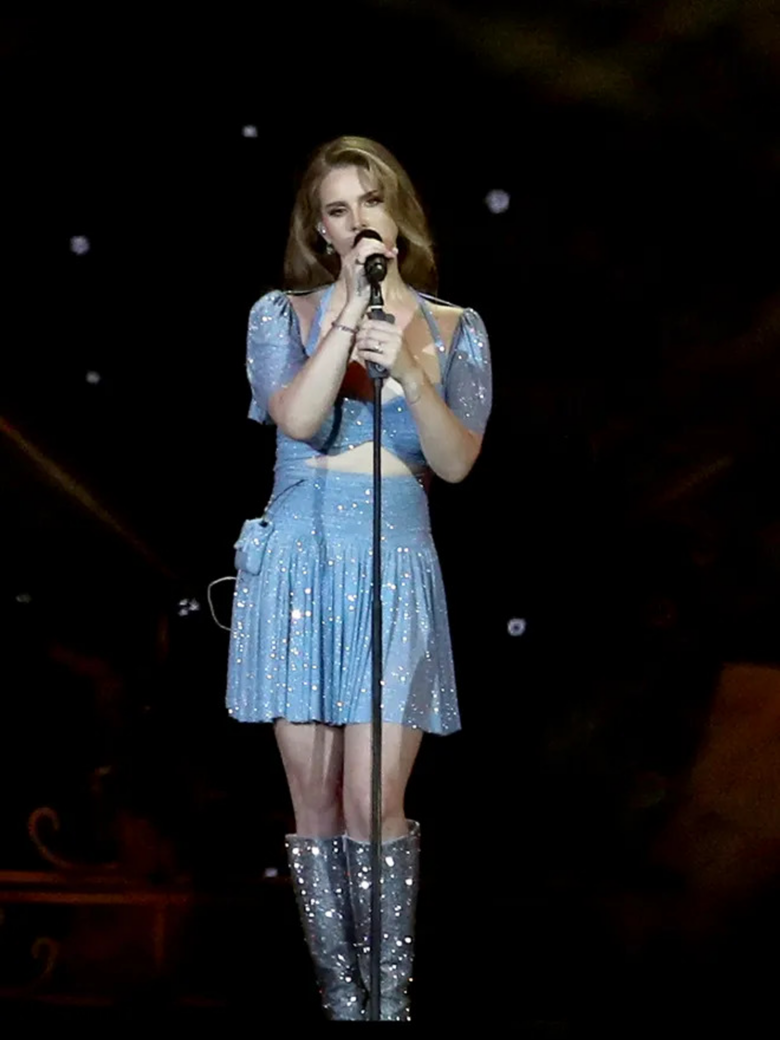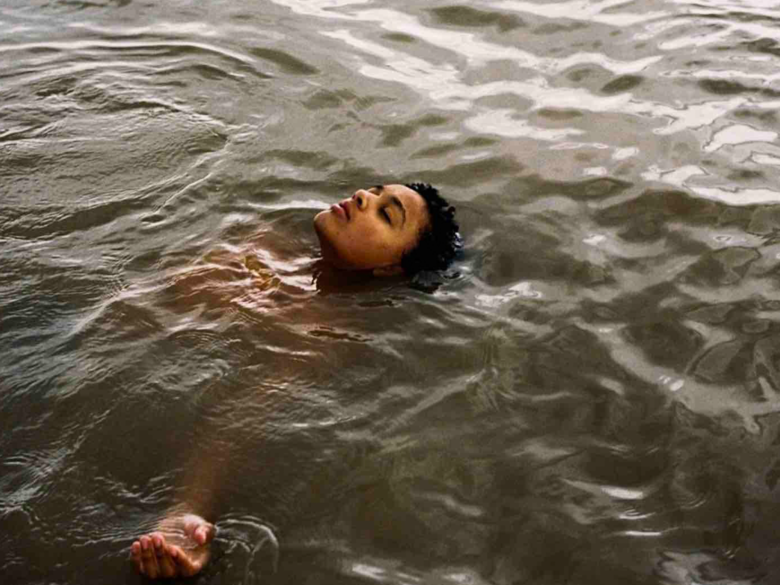The DIY Issue: Tanoa Sasraku
Growing up in the port city of Plymouth, in southwest England, British-Ghanaian artist Tanoa Sasraku has always found the seaside a powerful resource for her work. Having the opportunity to breathe and roam around the vast, undisturbed landscape surrounding her hometown allowed for much-needed respite, with it becoming, as she puts it, “a contemplative space to access and get away from the white populous,” who “made [her] life hard there”. As a biracial, gay woman who was brought up within a predominantly white family, Tanoa, perhaps inevitably, went on to form a practice that explores the intersections of identity.
She graduated with a BA in Fine Art from Goldsmiths in 2018, her chosen mediums being film and flag-making, and both are vital to her process of examining the reality of racism and national identity. The two strands of her work often come together, with her short films, such as Whop, Cawbaby (2018), featuring her flag pieces, and her flags often influencing her filmmaking. Tanoa’s artistic output revolves around piecing together fractures – whether abstract memories or actual mixed material. She clashes together reality and fantasy in her films, and shreds and stitches in her costuming, creating a jagged, almost brutal reflection of racial struggle in Britain. The result is jarring but contemplative. “I like that hands-on, malleable way of smooshing memories together and it coming out quite clunky,” she says. “I really enjoy that – there’s something uncanny valley-ish about that. It’s quite unsettling.”
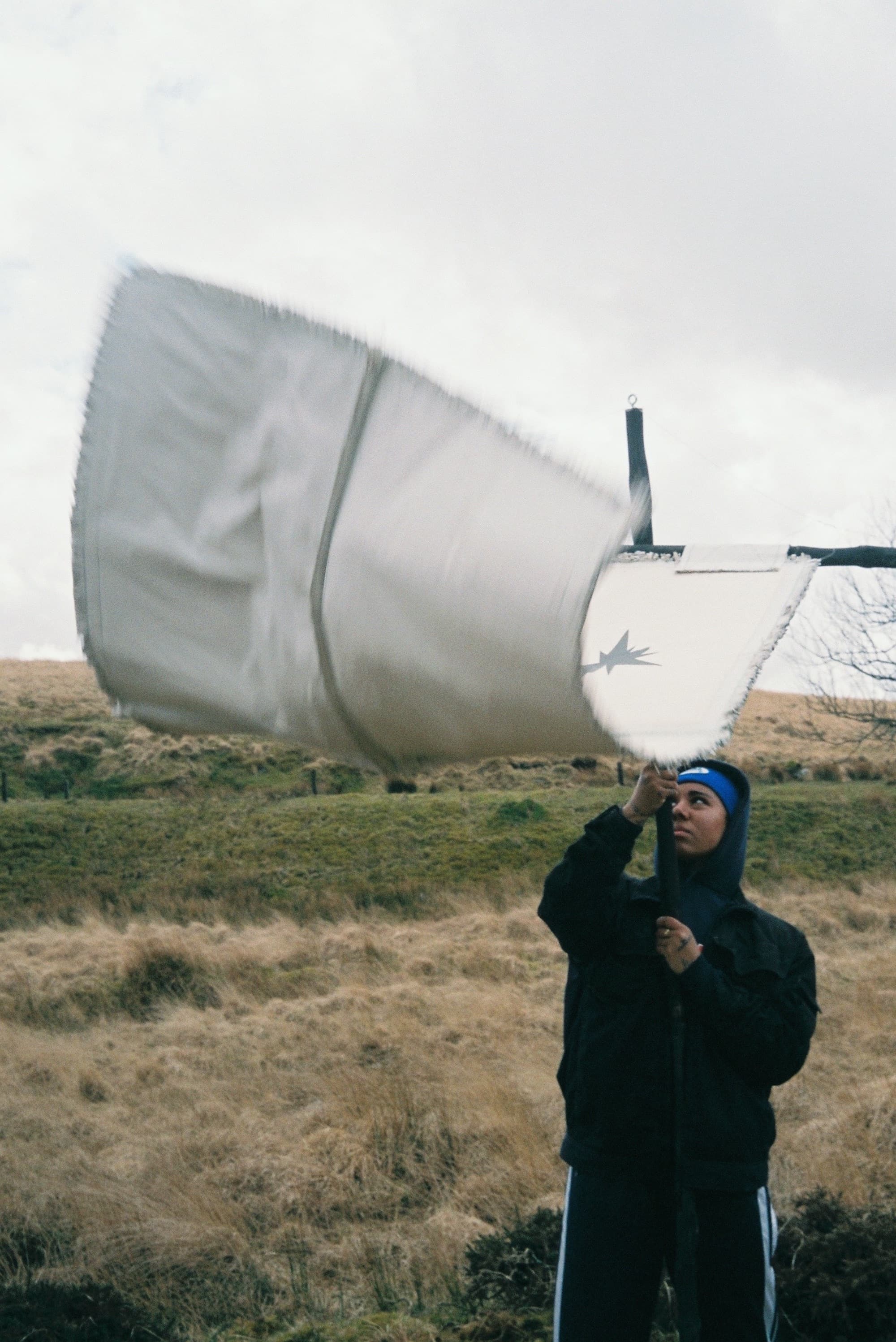
Now based in London, the artist returns home to the Devon coast often, both literally and in her filmmaking and flag-making. “I often feel like I was robbed of a potentially really beautiful childhood in that part of England,” says Tanoa, who was the target of racism during her school years, “so a lot of my work involves me returning – whether that’s literally returning to Devon to document on film and taking my sculptures out into the landscape, or travelling back in my stories to create more surreal contemporary works.”
As she prepares to commence studies at Royal Academy Schools in 2021, the pressure to produce art that feels “obviously Black” looms, with the current sociopolitical climate meaning art institutions are desperate to engage with artists of colour and gain their take on world affairs. In response, Tanoa delves instead into more experimental aesthetics, favouring the surreal and the uncanny to express the fraught emotions of one pulled in multiple directions throughout life. She remains unflinching in her scrutiny, both of the world and of her place in it, and she remembers a conversation with Harold Offeh, the guest art editor for this issue, in which he told her, “You don’t need to force it, your presence as a Black maker is enough behind the work.” She takes centre stage in much of her art and, though the fear of such exposure is ever-present, the need to offer something wholly honest outweighs everything – vulnerability is merely a small price to pay for truth.
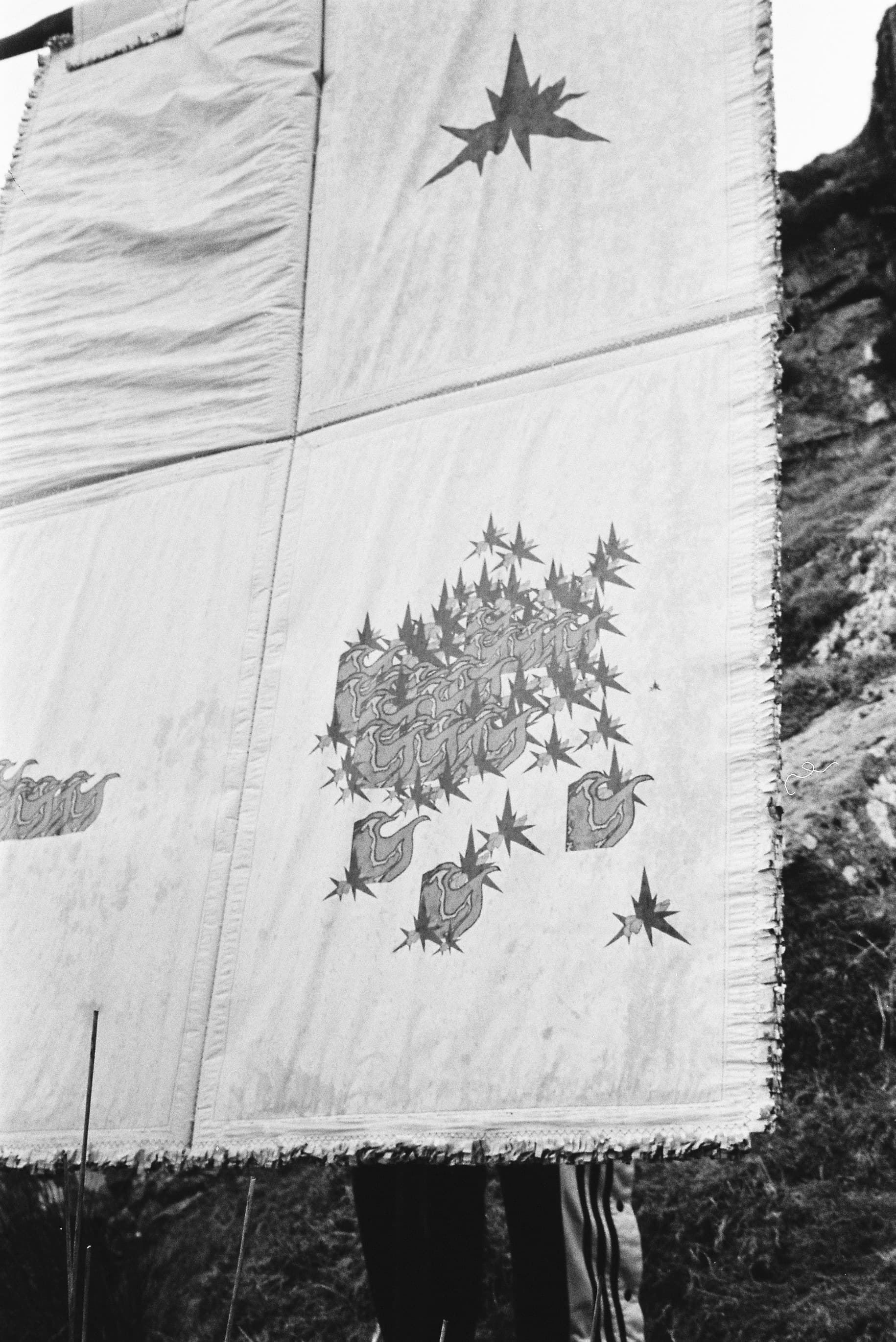
Your practice moves between flag-making and filmmaking. What is it about those mediums that keeps you inspired?
Filmmaking is such an intense process, and having the ability to work in sculpture and make flags is a meditative, tangible process. It’s crucial for me to balance my practice, to have a year where I work on a film and then a year where I work on the flags – for fulfilment essentially. My flags work as catalysts for the narratives of my films, so I really like the fact that one feeds into the other and there’s this cyclical relationship between the two. I work with pastel on paper and then machine stitching, and it’s quite a simple craft, but I think they become interesting, at times decadent, objects. I would be disappointed if the flags – which are made from quite throwaway classroom materials like charcoal and newsprint – didn’t come out looking gorgeous. It’s something transformative. The reverse of the flags is also important. You see the front and then you move behind and it has this almost emptiness because it’s plain newsprint and the reverse of the stitching – there’s that duality of decadence and mundanity.
Your late father, Kofi Sasraku-Ansah, was an exceedingly accomplished fashion designer. How vital was his influence on you pursuing textile-based art or even art in general?
My dad’s experience as a Black creative in the 1980s was of running up against a lot of closed doors and having to work twice as hard, if not more so, than everyone around him competing in the same industry. He wanted me to take over Kofi Ansah couture, that was his dream for me, and he really didn’t want me to study art. I pushed against that, that desire for me to work in the fashion industry and to solely work with textile. I think he thought if he had a “business head” rather than a solely creative head he could have had an easier life, so he wanted me to get a business head-on rather than following and just developing creativity, which he thought I was just imbued with naturally. So it’s kind of hilarious that I now work in textile and have been costume-making [Laughs]. I think it was inescapable for me, bursting through whether I liked it or not.
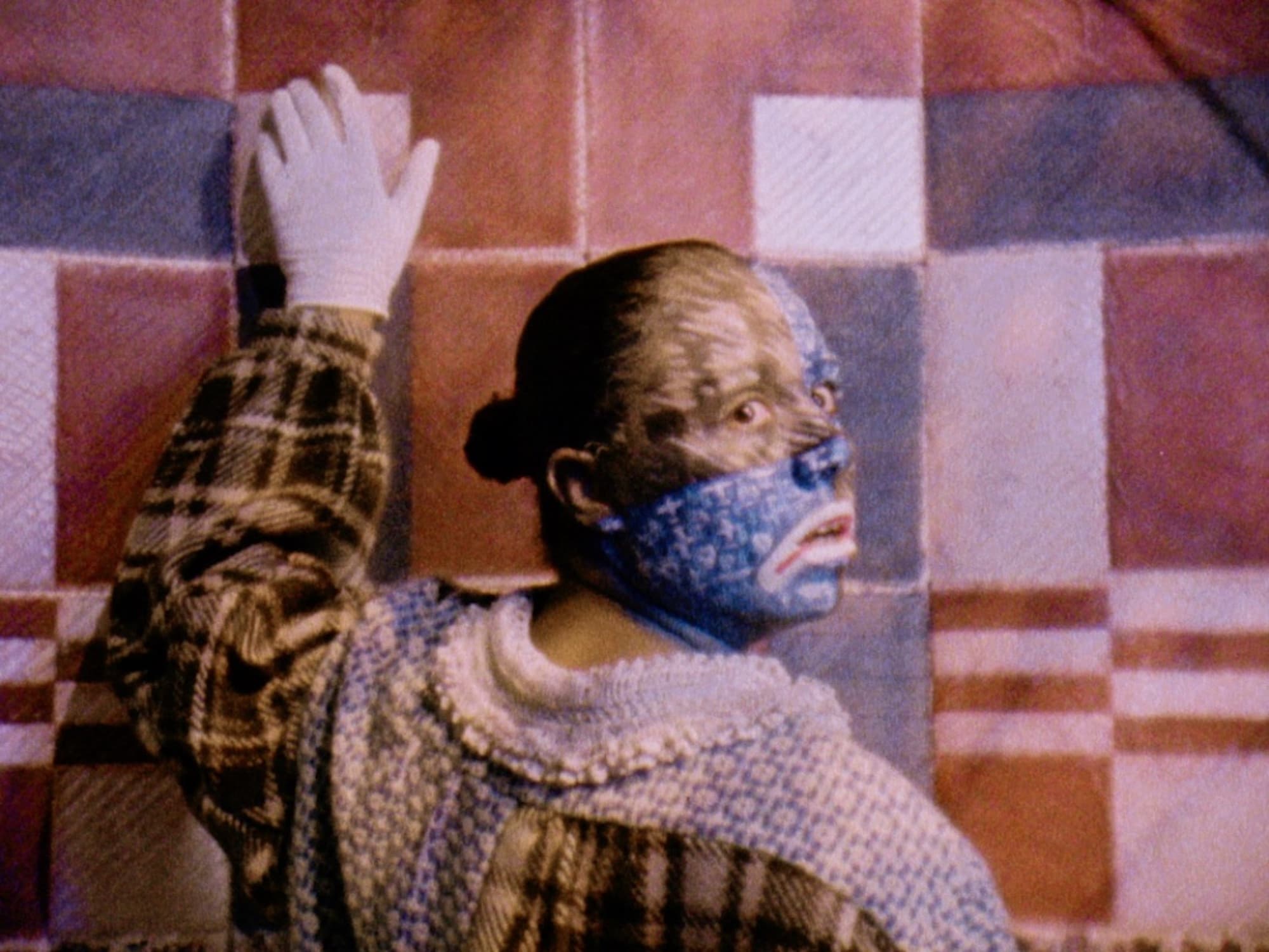
Harold wanted to direct a question to you. Tools are vital for building, deconstructing and dismantling. You yourself cut up, piece together, rip apart and stitch together again. Audre Lorde famously said, “the master’s tools will never dismantle the master’s house”, a sentiment keenly felt, currently. Where does your work fit into that narrative?
I use the 1940s, avant-garde film aesthetic, and that period of filmmaking was dominated by white filmmakers. I think quite a lot about the fact that, if a Black person were to be introduced to filmmaking in the early 20th century, they would see that what was considered to be the most ambitious, technically forward work at the time was The Birth of a Nation [a film released in 1915 that was controversial for its portrayal of African Americans, played by white actors in blackface, as unruly and unintelligent villains who were sexually aggressive towards white women]. That, plus minstrelsy, being the key forms of entertainment in American white society at least, show that there was no space for Black people in filmmaking until recently. Trying to use the tools of avant-garde filmmaking to insert myself retrospectively into that canon is something I’ve been trying to do – that’s the biggest way I see myself using tools to dismantle.
Your body of work frequently focuses on unravelling the complexities of identity and race in white Britain. In your short films Whop, Cawbaby and O’ Pierrot [2019], for example, you play the lead roles. Is the centring of the artist when dealing with the topic of identity something that will always be inevitable?
Being a woman of colour and being gay, then growing up in a white family, I was, it felt like, [always] trying to hide or diminish parts of my identity. Now that I have the confidence to make performative work, I think I have to be in the centre of it, otherwise it would feel like I’m continuing the negative cycles and patterns I’ve been living in my real life. I had always felt scared of performance. I was like, “I’m scared to do this and I feel embarrassed having my body in the centre of the work,” but then I was like, “Why? Why not?” I thought, “There needs to be a body to fill this and I know exactly what I want this character to be, so let me give it a go.” I can see myself eventually not needing to be in the centre and, actually, I really like mobilising my flags as characters and protagonists, and that’s something I want to push forward with in my more experimental projects.
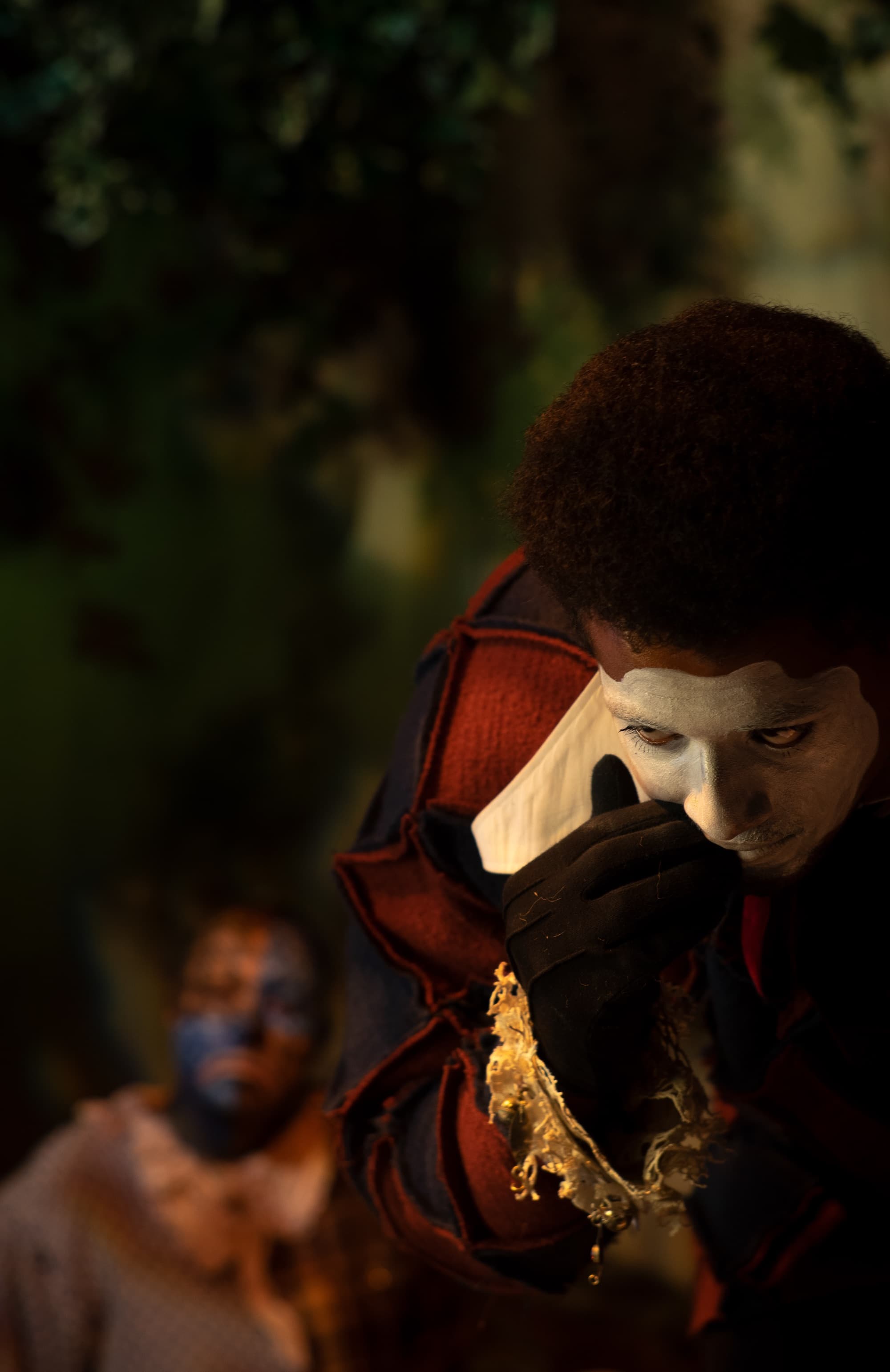
There’s a deliberate focus on the Black body and the Black experience in your films. With regard to an audience, who are you wanting to reach and engage with your works?
With O’ Pierrot in particular, I wanted to make a Black fairytale horror for Black people to see and enjoy in the way I felt when watching Get Out for the first time – I was like, “This feels so amazing to see my experiences reflected in such a terrifying satirical way.” So I wanted to add a few winks and nods that Black people who understand what it’s like to grow up in the UK could relate to and appreciate in quite an abstract form, but also just say to white viewers, “It’s fucking rough growing up in the UK as a person of colour and especially as a Black gay woman.” I’m trying to send a bit of a message to white people and provide something a bit more fun for Black people to enjoy.
You’re not afraid of bouncing from medium to medium – in fact, you relish it. What’s new for you, creatively?
The work I made for my show Recession Grimace [a group exhibition recently held at Klosterruine, Berlin] is very different from my previous [pieces]. The jump from O’ Pierrot to Recession Grimace reflected some of the things I’ve been thinking about in terms of expectations of me as a Black maker and this pressure to make work that is “obviously Black”. So, I thought, let me make something that’s actually just about love and this break-up I’ve just gone through. That was a big shift for me, making something that was totally honest rather than thinking about what’s going to make me look the most “Black” on Instagram. It’s something I’ve struggled with quite a bit because I think, for my generation of artists, our work and our success revolves around what our work looks like on Instagram. I want to try to get out of that.
Can there be a happy artistic middle ground between something vapid and overly performative and work that is viscerally raw and honest? Or do you feel your work always has to be brutally truthful to have value?
Honesty is really important to me. For example, if someone felt they had to make work about what’s going [on] with Black Lives Matter, just because it’s happening right now and it’s in the news and people feel like they have a responsibility to reflect what’s pertinent, I don’t know how much I would enjoy viewing knee-jerk work like that. It’s much more interesting to see more uncanny or uncomfortable honesty coming out in people’s practice. I’m done with this echo chamber we’re in, in terms of regurgitating opinions to people who are just going to clap for us. I don’t want my work to only be for queer south Londoners of colour, it’s not that useful to me to just please people who understand exactly where I’m coming from. I think difficult conversations need to be had if the insane place our world is in is to get any better. We need to start talking to people who don’t think like us and it’s going to be hard. It’s obviously going to be unpleasant at times, but it’s something I want to try. So I guess I am into rawness and honesty [Laughs].
The DIY Issue is out now, get your own copy here.
